Today we will learn about such a powerful book, from which you will understand the power of creative visualization. The book Creative Visualization, Use the Power of Your Imagination to Create What You Want in Your Life, written by Shakti Gawain. This book teaches us to use the power of our imagination to create what we want in life & methods for using mental imagery and affirmation to produce positive change. Today, creative visualization techniques are used successfully in health, athletics, business, education, and the creative arts.
This book has been told in 6 parts; let’s understand them one by one in detail.
Chapter 1. The basics of creative visualization
What is Creative Visualization?
Creative visualization is using your imagination to create what you want in your life. It is your natural power of imagination, the primary creative energy of the universe, which you constantly use, whether or not you are aware of it.
This book is about learning to use your natural creative imagination more consciously as a technique to create what you truly want, love, fulfillment, enjoyment, and satisfying relationships. The use of creative visualization gives us a key to tapping into the natural goodness and bounty of life.
Imagination is creating an idea, a mental picture, or a feeling sense of something. In creative visualization, you use your imagination to create a clear image, thought, or feeling of something you wish to manifest. Then you focus on the idea, feeling, or picture regularly, giving it positive energy until it becomes an objective reality.
For example, you are feeling unsatisfied with your current job situation. If you think the job is right for you, but some factors need improvement, imagine the upgrades you desire. If that doesn’t work, or if you feel you would prefer a new job, then focus on imagining yourself in the employment situation you want.
Get relaxed into a deep, quiet, meditative state of mind, and imagine that you are working in your ideal job. Repeat this short, simple exercise often, twice a day or whenever you think about it. If your desire and intention to change are clear, you may find some shift in your work reasonably soon.
How does creative visualization work? To understand, it’s helpful to look at several interrelated principles:
1. The physical universe is energy
Our physical universe is not composed of any “matter”; its primary component is a kind of force or essence that we call energy. Physically, we are all energy, and everything within and around us is energy. Furthermore, all forms of energy are interrelated and can affect one another.
2. Energy is magnetic
One law of energy is this: Energy of a certain quality or vibration tends to attract the power of a similar quality and vibration. For example, thoughts and feelings have their magnetic energy that attracts energy of a similar nature.
3. Form follows idea
Thought is a quick, light, mobile form of energy. It manifests instantaneously, unlike denser forms such as matter. Therefore, when we create something, we always make it first in thought form.
4. The law of radiation and attraction
This is the principle that whatever you put into the universe will be reflected in you. “As you sow, so shall you reap.” When we are negative and fearful, insecure or anxious, we often attract the same experiences, situations, or people we seek to avoid.
5. A simple exercise in creative visualization
The primary creative visualization technique: Think of something you would like. For this exercise, choose something simple that you can easily imagine attaining. It might be an object you would like to have, an event you would like to have to happen, a situation in which you’d like to find yourself, or some circumstance in your life you’d like to improve.
Get in a comfortable position, sitting or lying down, in a quiet place where you won’t be disturbed. Relax your body completely. Breathe deeply and slowly from your belly. Count down slowly from ten to one, feeling more deeply relaxed with each count. When you feel deeply relaxed, start to imagine what you want exactly as you would like. If it is an object, imagine yourself using it, admiring it, enjoying it, and showing it to friends.
Do this process only as long as you find it enjoyable and exciting. For example, it could be five minutes or half an hour. Repeat every day or as often as you can.
It’s essential to relax.
It’s important to relax deeply when first learning to use creative visualization. When your body and mind are deeply relaxed, your brain wave pattern changes and becomes slower. This deeper, slower level is called the alpha level, while your usual busy waking consciousness is called the beta level.
The alpha level is a healthy state of consciousness because of its relaxing effect on the mind and body. It is perfect for creative visualization at night, before sleeping, or in the morning just after awakening because, at those times, the mind and body are already profoundly relaxed and receptive.
Chapter 2. How to visualize?
Many people wonder exactly what is meant by the term “visualize.” Some worry because they don’t actually “see” a mental picture or image when they close their eyes and try to visualize. When some people first try to imagine, they feel that “nothing is happening.” Don’t get stuck on the term “visualize.” It is not at all necessary to mentally see an image.
Close your eyes and relax deeply. Think of some standard room such as your bedroom or living room. Imagine yourself walking into the room and lying on a comfortable chair, couch, or bed. Remember the experience as vividly as possible, and enjoy the pleasurable sensations again. Whatever process you used to bring these scenes to your mind is your way of “visualization.”
Four basic steps for creative visualization
Step 1. Set Your Goal Decide on something you would like to have, work toward, realize, or create. It can be on any level, a job, a house, a relationship, a change in yourself, increased prosperity, a happier state of mind, improved health, beauty, a better physical condition, solving a problem in your family or community, or whatever. Choose goals that are relatively easy for you to believe in and that you feel are possible to realize shortly.
Step 2. Create a Clear Idea, a mental picture, or a feeling of the object or situation exactly as you want it. It would help if you thought of it in the present tense as already existing the way you want it to be.
Step 3. Focus on It Often Bring your idea or mental picture to mind often, both in quiet meditation periods and casually throughout the day when you think of it. In this way, it becomes an integrated part of your life, becomes more of a reality for you, and you project it more successfully.
Step 4. Give It Positive Energy As you focus on your goal, think positively and encouragingly. Make strong positive statements to yourself: that it exists, has come, or is now coming to you. See yourself receiving or achieving it. Continue to work with this process until you reach your goal.
Chapter 3. Using creative visualization
The basic technique of creative visualization is simple. The important thing now is to learn to use it in a way that works for you. That helps you to make positive changes in your life.
The most important thing to remember is to use creative visualization to make it a regular part of your life. You have a standard creative visualization meditation period for fifteen minutes or so each morning when you wake up, each evening before sleeping, and in the middle of the day if you can manage that. Always start your meditation periods with deep relaxation, then follow with any visualizations or affirmations you wish.
Two things I have found most important in my growth process with creative visualization are:
Regular reading of inspiring and supportive books helps to keep me in touch with my highest ideals .
1. Having a friend or (ideally) a community of friends who are also tuned into learning to live more consciously will support you and help you in your efforts.
We can think of life as containing three aspects, and we can call those aspects being, doing, and having and being in the essential experience of being alive and conscious. It is the experience we have when we’re entirely focused on the present moment, the experience of being complete and at rest within ourselves.
Doing is movement and activity. Its roots are in the natural creative energy that flows through every living thing and is the source of our vitality. Having is the state of being in a relationship with other people and things in the universe. It is the ability to allow and accept things and people into our lives to occupy the same space with them comfortably .
Three Necessary Elements
Three elements within you determine how successfully creative visualization will work for you in any given situation:
1. Desire- You must genuinely desire to have or create what you have chosen to visualize. Ask yourself, “Do I truly, in my heart, desire this goal to be realized?”
2. Belief- The more you believe in your chosen goal and the possibility of attaining it, the more certain you will be to do so. Ask yourself, “Do I believe this goal can exist?” and “Do I believe that I can realize or attain it?”
3. Acceptance- You must be willing to accept and have what you seek.
The total of these three elements is what I call your intention. When you have the firm intention to create something, you sincerely desire it, believe that you can do it, and are willing to have it.
The only effective way to use creative visualization is in the spirit of the course of the Tao, “going with the flow.” That means that you don’t have to exert effort to get where you want to go; you keep clearly in mind where you would like to go and then patiently and harmoniously follow the flow of the river of life until it takes you there. Going with the flow means holding onto your goals lightly (even though they may seem very important) and being willing to change .
If you have a lot of heavy emotions riding on whether you attain your goal, you will tend to work against yourself. In your fear of not getting what you want, you may be energizing the idea of not getting it as much or more than you are energizing the goal itself.
An essential part of the creative visualization process is developing a sense of prosperity. This means understanding or consciously taking the point of view that the universe is abundant. Everything you truly need or want is here for the asking; you only need to believe that it is so, truly desire it, and be willing to accept it.
One of the most common causes of failure when seeking what you want is “scarcity programming.” This is an attitude or set of beliefs about life. They are based on a need for more understanding of the universe’s workings or misunderstanding some essential spiritual principles. For example, the truth about this earth is that it is an infinitely good, beautiful, nourishing place. The only “evil” comes from a lack of understanding of this truth .
Chapter 4: Meditation and affirmation
Sit comfortably with your back straight, either in a chair or cross-legged on the floor. Close your eyes, breathe slowly and deeply, counting down from ten to one until you feel deeply relaxed. This meditation keeps you balanced between the cosmic energy of vision, fantasy, and imagination.
Meditation is for healing, purifying your body, and getting your energy flowing. Imagine a glowing sphere of golden light surrounding the top of your head. Breathe deeply and slowly in and out five times while you focus on the light globe, feeling it radiate from the top of your head .
Start using creative visualization to create a sanctuary within yourself where you can go anytime you want to. Close your eyes and relax in a comfortable position. Imagine yourself in a beautiful natural environment. It can be any place that mountaintop, in the forest, beside the sea. It could even be under the ocean or on another planet. It should feel comfortable, pleasant, and peaceful to you. Now do anything you would like to make the place more homelike and comfortable.
All of us have tremendous wisdom and knowledge right within us. It is available to us through the intuitive mind, our connection with Universal Intelligence. An inner guide is a higher part of yourself, which can come to you in many different forms, but usually comes in the form of a person or being whom you can talk to and relate to as a wise and loving friend.
Chapter 5: Special techniques
It’s an excellent idea to start a notebook that can serve as your creative visualization workbook. For example, you may write down affirmations that you hear or think. There are many other creative ways to use your notebooks, such as recording your dreams, goals, and fantasies, keeping a journal, inspiring thoughts and ideas or quotes from books and songs that are meaningful to you, drawing pictures, etc.
# Few suggestions for starting your notebook:
1. Affirmations: Write down your favorite affirmations. Then, you can list them all on one page.
2. Outflow list: List how you can outflow your energy to the world and others around you, both generally and specifically.
3. Success list: Make a list of everything you feel you are a success at, have been a success at, or have done successfully at some time in your life.
4. Appreciation list: Make a list of everything you can think of that you are incredibly thankful for or especially appreciate having in your life.
5. Fantasies & creative ideas: Jot down any beliefs, plans, dreams for the future, or innovative ideas that come to you.
6. Clearing: In learning to use creative visualization, you may get in touch with blocks in yourself that hold you back from attaining your highest good. A “block” is a place where energy is constricted — not moving, not flowing. Usually, blocks are caused initially by repressed emotions of fear, sadness, guilt, self-criticism, and resentment (anger), which cause a person to tighten up and close down spiritually, mentally, emotionally, and even physically. In dealing with a block on any level, the keys to this are:
1. Mental and emotional acceptance of what you are feeling.
2. Clear observation leads to an understanding of the root of the problem, which is often a limiting attitude or belief.
The trick is to simultaneously love and accept yourself compassionately for having this belief and, at the same time, see that you are ready to let go of it because it is limiting, destructive, self-defeating, and untrue.
Chapter 6: Setting Goals
The trickiest part of getting what you want is just figuring out what you want! However, as soon as I have a primary, firm intention to create a particular thing, it manifests almost immediately (often within hours or days of getting clear about it) with minimal effort involved. I experience this as a kind of “click” in my consciousness when I suddenly get a powerful experience of what I want and an equally intense experience that I’m going to get it .
Discovering what you want in your life can be facilitated by the process of setting goals. I often find it helpful to do some exercises with pen and paper, which I share with you here. When setting goals, keeping a few things in mind is essential. First, remember that setting goals do not mean that you are stuck with those goals. You can change them as often as you want and feel it’s necessary. Remember that setting goals do not mean pursuing them through effort, striving, or struggling. It does not mean you have to become emotionally addicted to achieving them .
Creative visualization can take the form of mental imagery, spoken or written words, or a physical image or picture. Anything that helps you to create a straightforward “blueprint” to put out in the universe is an aid in creative visualization. This exercise helps you to create a clear picture through written words.
The process of doing it helps you get more explicit about what you really want, and it allows you to manifest it. I use it for all my essential goals. Keep your ideal scene in your notebook, on your desk, near your bed, or hang it on your wall.
Chapter 7: Treasure Maps
Making a “treasure map” is a powerful and fun technique. A treasure map is an actual, physical picture of your desired reality. It is valuable because it forms a prominent, sharp image that can attract and focus energy on your goal. You can make a treasure map by drawing, painting, or collaging using pictures and words cut from magazines, books, or cards.
# Guidelines that will help you make the most effective treasure maps:
1. Create a treasure map for a single goal
2. You can make it any size that’s convenient for you.
3. Be sure to put yourself in the picture. For a very realistic effect, use a photograph of yourself.
4. Show the situation in its ideal, complete form, as if it already exists.
5. Use lots of color in your treasure map to increase the power and impact on your consciousness.
Chapter 8: Creative visualization in relationships
One of the most valuable ways we can use creative visualization is in improving our relationships. In a relationship, as in everything else, we get precisely what we believe in, expect, and “ask for” on our most profound levels. The people we are in relationships with are always a mirror, reflecting our own beliefs, and simultaneously we are mirrors, reflecting their beliefs. A relationship with another human being is one of the most powerful tools for growth; if we look honestly at our relationships we can see so much about how we have created them.
# Some things you can do to help you with your relationships:
1. Look at your goals in the relationship. What do you truly want out of this relationship?
2. Take a good honest look at what beliefs and attitudes keep you from creating what you want.
3. Use visualization to improve a problematic relationship.
Relax into a deep, quiet, meditative state of mind; imagine the two of you relating and communicating openly, honestly, and effectively. Imagine telling this person anything you need to share to clear things up between you. Imagine the person listening and hearing you, then saying anything they need to say, with you listening in return.
Chapter 9: Living creatively
Creative visualization is not just a technique but a state of consciousness. It is a consciousness in which we deeply realize that we are the continuous creators of our universe, and we take responsibility for that every moment.
There is no separation between God and us; we are divine expressions of the creative principle on this level of existence. There can be no real lack or scarcity; we have nothing to try to achieve or attract; we contain the potential for everything within us. Manifestation through creative visualization is realizing and making our divine potential visible on the physical plane.
The author says, I like to think of myself as an artist, and my life is my most significant work of art. Every moment is a moment of creation, and each moment contains infinite possibilities. I can do things the way I’ve always done and try something new, different, and potentially more rewarding. Every moment presents a unique opportunity and a recent decision.
Creative Visualization Book Review
Creative Visualization by Shakti Gawain is an eye-opening and inspiring book that has profoundly impacted my journey toward self-improvement. Gawain introduces the concept of creative visualization, a powerful technique involving imagination to manifest our desires and goals.
Gawain provides practical exercises and real-life examples throughout the book to help readers develop their visualization skills. I found these exercises incredibly effective in bringing clarity to my thoughts and intentions, allowing me to harness the power of my mind to create positive changes in my life.
One of the most valuable lessons I learned from this book is aligning our thoughts and emotions with our goals. Doing so creates a magnetic force that attracts the resources and opportunities needed to achieve our dreams.
Creative Visualization is a comprehensive guide to understanding and applying visualization principles daily. Gawain’s writing is clear, concise, and warm and wise, making the book enjoyable and enlightening.
In conclusion, Creative Visualization is a must-read for anyone looking to unlock their full potential and create a life of happiness, abundance, and success. This book has truly transformed my perspective on the power of our thoughts and the limitless possibilities within our imagination.
Contents

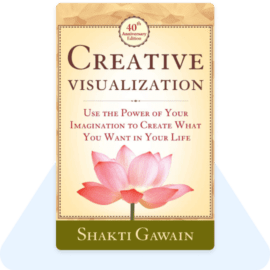
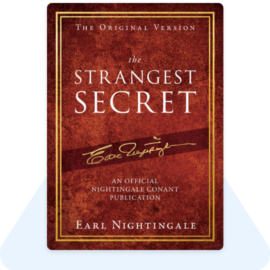
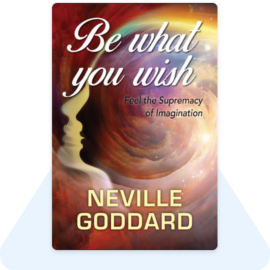


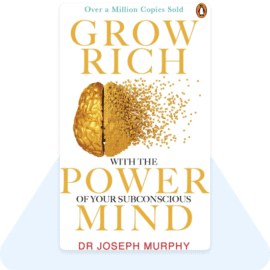
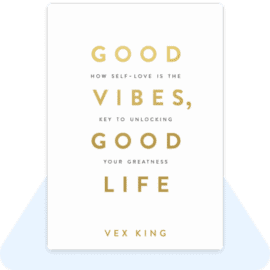
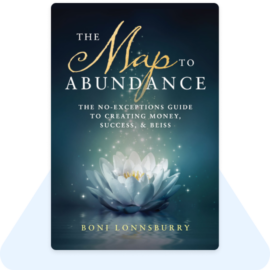
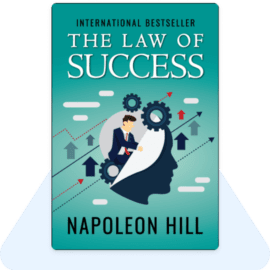


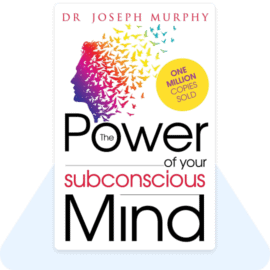
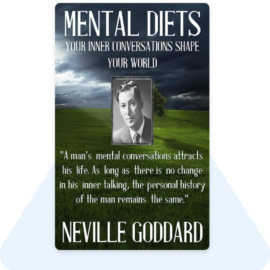
Thank you❤??
10-01-2023-Creative Visualization Book (Written by Shakti Gawain) Key Learnings:
Book is Awesome ✨ Total book is worth reading.
*Setting goals do not mean that you are stuck with those goals. You can change them as often as you want and feel it’s necessary.
*Guidelines that will help you make the most effective treasure maps:
*1. Create a treasure map for a single goal
*2. You can make it any size that’s convenient for you.
*3. Be sure to put yourself in the picture. For a very realistic effect, use a photograph of yourself.
*4. Show the situation in its ideal, complete form, as if it already exists.
*5. Use lots of color in your treasure map to increase the power and impact on your consciousness.
Thank you, Amit sir
Dear Team RBC + Amit Kumarr
Thanks for so wonderful book summary & frankly speaking I have done various coaching & training sessions and they taught me same thing as mentioned in book and I am thankful taht many concept got cleared.
Deepest Gratitude
This is the best book summary i ever read. Thank you so much sir ?
bahut positive feel kar rhi hu….. creative visualization book ko padhkr☺️☺️